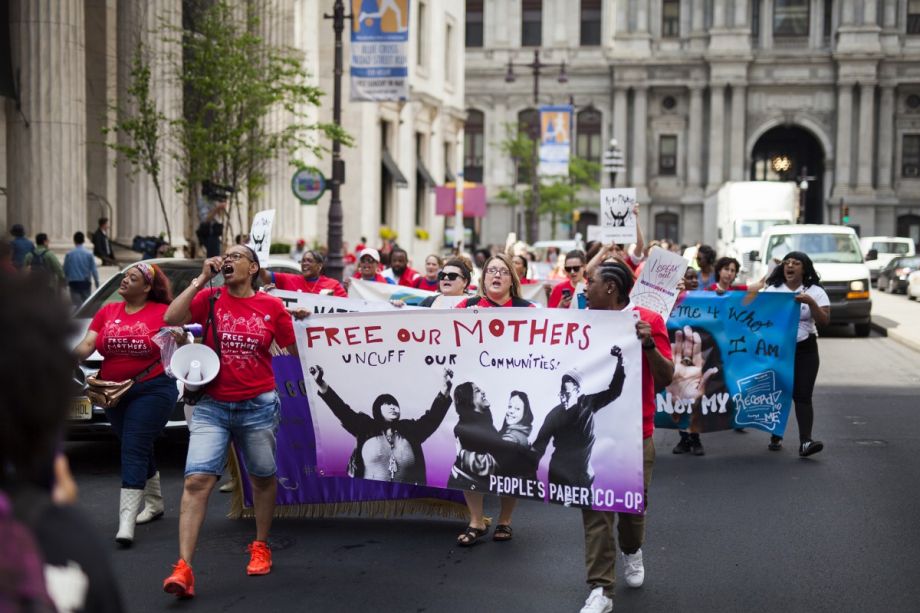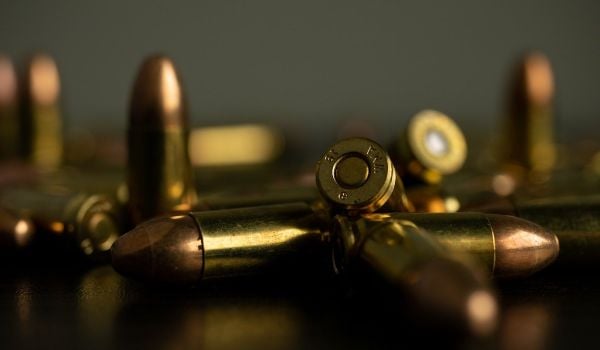At free legal clinics across Philadelphia, the first thing that The People’s Paper Co-op — working with organizations like the Philadelphia Lawyers for Social Equity and Community Legal Services — asks participants to do is something out of the ordinary.
Attendees are there to begin a process with lawyers to clear or clean up their criminal records. But first, they’re asked to print out these records, tear them up, and put them in blenders to create new, blank sheets of handmade paper.
The People’s Paper Co-op then asks each participant to respond to a prompt: “Without these records I am…”
Their written responses, along with a “Polaroid” photo called their “reverse mug shot”, are embedded into the new paper comprised of their shredded records. In an ongoing initiative, People’s Paper Co-op has taken each page to sew into a giant paper quilt.
It’s a powerful arts-based initiative that completely transforms an otherwise stressful, sterile legal clinic, organizers say. The work is one of four initiatives highlighted in a recent report by the Urban Institute looking at the ways arts and culture can strengthen community safety programming and criminal justice in cities across the country.
“We’ve started thinking about public safety more expansively — beyond making crime go down, or keeping people out of trouble,” says Mark Treskon, one of the authors of the report. “Sometimes the more easily-identified metrics, like dropping recidivism rates or dropping crime rates, can miss what’s going on.”
Besides the work of People’s Paper Co-op, the study also looks at a community festival and pop-up marketplace organized by the Alameda County Sheriff’s Office in California; a clubhouse in Brownsville, Brooklyn that young people helped design and program; and an effort in Milwaukee to transform an unused rail corridor into an inclusive space for disparate communities. The study takes a case-based approach to analyze how these initiatives utilize art to change the emotional experience within public safety and criminal justice spaces.
“We see that art can be a way for people to let their guard down, and approach themselves outside all the baggage from society,” says Treskon.
In 2014, as the People’s Paper Co-op was beginning, artists and activists Courtney Bowles and Mark Strandquist began working with community members at the Village of Arts and Humanities to discuss the causes, impacts, and potential solutions “to the collateral consequences of criminal records,” says Strandquist.
In Philadelphia, an estimated one in five people has some type of criminal record. And within Pennsylvania, criminal charges — including charges that did not result in convictions — are publicly available online.
The artists knew of lawyers leading free expungement clinics around the city. It offered the groundwork to “start re-imagining what a legal clinic could be,” Strandquist says.
Bringing art into a clinic environment transforms the space, says Seth Lyons, an attorney with the Community Legal Services of Philadelphia. “The clinic model is creating the most efficient way to see as many clients as possible, in a short amount of time with little resources,” he says. “It’s a legal process that can ignore the significance of what’s happening for that person.”
Shredding the record and presenting participants with a blank slate, he says, “creates a space to see the power of this record, this piece of paper that holds people back but doesn’t have to define who they are.” He adds that the art component helps “break down power structures,” making the process more collaborative between lawyers, law students, artists and clients.
Another aspect that distinguishes the effort is the leadership of formerly incarcerated individuals. “People’s Paper Co-op is really participatory, following a bigger push we’ve seen to listen to people with lived experience and take their input seriously,” says Sino Esthappan, another author of the Urban Institute report. “Then they take it a step forward, and provide those people a seat at the decision table.”
At expungement clinics, participants are greeted by co-op fellows who went through the expungement process and were hired to develop skills in paper-making, public speaking, community organizing and journalism. “They act as a translator for law-speak,” says Courtney Bowles, the co-director with Strandquist.
Co-op fellows have also interviewed over 1,200 Philadelphians with criminal records to hear their thoughts on reducing recidivism rates. The responses, according to Bowles and Strandquist, will be used to create the city’s first “re-entry bill of rights,” titled “A Blueprint for Keeping Us Free.”
“Through our partnerships, we are able to connect the voices, dreams, stories and demands of folks in our programs with those in power,” Strandquist says.
Art has come to shape most all of the anti-recidivism work done by People’s Paper Co-op — and by creating artwork, their initiatives can readily be exhibited to the public. The paper quilt made from the expungement clinics, for example, has been exhibited across Philadelphia in museums, galleries, city hall, church basements, legal clinics, city streets, detention centers and more.
“Art allows us to trespass into spaces that have strategically and systematically silenced and excluded the voices of those impacted by the criminal justice system,” Strandquist says. “It provides counter-narratives of people’s lives, dreams and potential.”
This article is part of “For Whom, By Whom,” a series of articles about how creative placemaking can expand opportunities for low-income people living in disinvested communities. This series is generously underwritten by the Kresge Foundation.
UPDATE: This article has been clarified to reflect that the People’s Paper Co-op has worked with both Philadelphia Lawyers for Social Equity and Community Legal Services on legal clinics for criminal record expungement.

Emily Nonko is a social justice and solutions-oriented reporter based in Brooklyn, New York. She covers a range of topics for Next City, including arts and culture, housing, movement building and transit.
Follow Emily .(JavaScript must be enabled to view this email address)
















